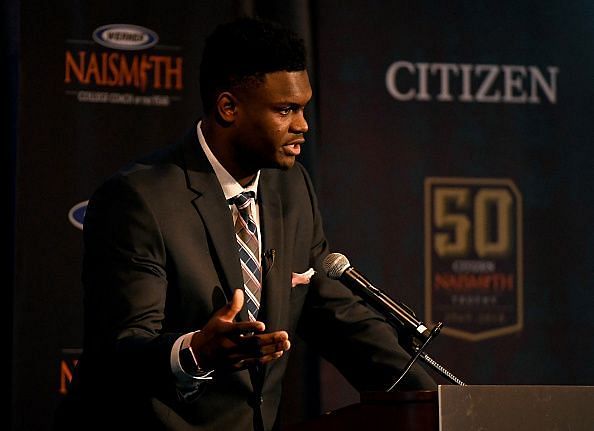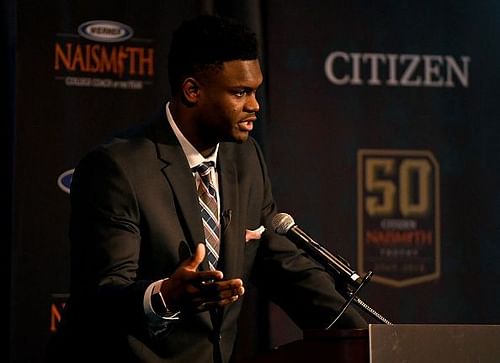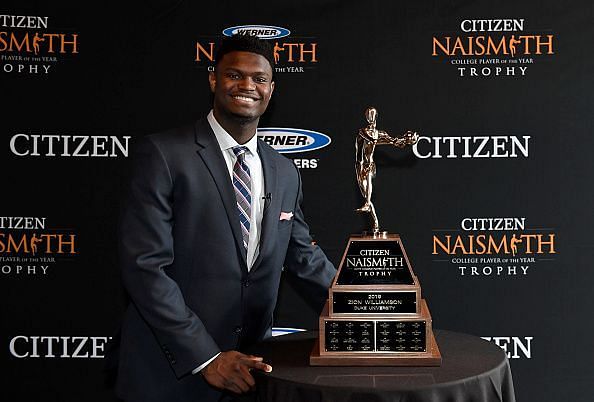
A Revisit of Senator Chris Murphy's 'Madness Inc.'

In, ‘Madness, Inc. How everyone is getting rich off college sports – except the players.’, Taylor Branch and Senator Chris Murphy present arguments that show their support for collegiate athletes in revenue-generating sports to receive some sort of compensation beyond a scholarship.
The debate of whether or not student-athletes should be financially compensated has been a hot button issue for years now. However, the debate has really heated up within the last year due to the emergence of Duke University basketball player, Zion Williamson, and an incident back in February when he tore through his sneaker during a game against the University of North Carolina resulting in Williamson spraining his knee.
While both sides of the debate have reasonable arguments to support their claim, in my opinion, I believe that both sides of the argument have legitimate cases that support both parties in this ongoing debate.
Blanch begins his argument by discussing the most anticipated college basketball game of the last decade – Zion Williamson vs. the North Carolina Tar Heels on Feb. 20th, 2019, at Cameron Indoor Stadium. As Blanch says, “4.3 million people will tune in, making it the most-viewed weeknight college basketball game in ESPN history.
On game day, tickets run at $4,000 each, easily beating the get-in price for the Super Bowl that occurred just weeks before. Spike Lee is in attendance. President Barack Obama sits courtside (Blanch. Madness Inc. p.1).”

As previously mentioned, Williamson tore through his shoe and began to clutch his knee, just thirty-four seconds into the game. Within the next 24 hours, Nike, the sneaker company who has a sponsorship with Duke University’s men’s basketball team, suffered greatly because of it.
Nike’s stock deteriorated by 1.1% in that 24-hour period, which equivalates to around a $1.1 billion loss. The fact that an 18-year-old kid who just one year ago was playing high school basketball in Spartanburg, South Carolina, is not only borderline incredible, but also a testament to the age of social media that we currently live in that allowed Williamson to expand his brand by posting videos on his Instagram page of absolute elite feats of athleticism with a basketball.
When Williamson returned to Duke to play in the NCAA Tournament a few weeks ago, advertising companies began to fall over themselves to have their companies earn sponsorship rights during, “March Madness.”
As Blanch states, “Annually, it captivates millions across the country as teams compete over three action-packed weekends full of unforgettable moments. To no surprise, it is one of the most viewed sporting events in the world, with more than 100 million viewers glued to their screens this year. With those viewers is the opportunity to make money – lots and lots of money.
The NCAA Tournament earns more than $1 billion annually in media revenue, which is nearly as much as the entire NFL Playoffs, Super Bowl included (Blanch. Madness Inc. p.1).” Unsurprisingly, advertisers such as Coca-Cola, Google and Geico were just three of the 97 companies that made sure that they would be represented during “March Madness” this season, paying up to $1 million for the rights to broadcast 30-second commercial spots during games (especially ones that involved Williamson).
With commercialism and capitalism in the world of college sports never larger, everyone seems to be profiting off of it, except for the players themselves. As blanch says, “Yet, as athletes provide the product that has fueled this industry, they see a fraction of the revenue they generate while continuing to face severe penalties for failing to provide by a labyrinth of rules that restrict any meaningful participation in that industry (Blanch. Madness Inc. p.2).”
In collegiate sports, according to NCAA rules, athletes are not allowed to profit off their own likeness. Which seems bizarre considering that everyone besides them profits off their likeness.
The hypocrisy that Blanch acutely points out within this is that, “Meanwhile, tax-exempt non-profit institutions of higher education condone and endorse broadcasting and apparel contracts that surpass $250 million, coaches’ salaries that beat their professional equivalents, and lavish spending on facilities that amount to amusement parks aimed at seducing the nation’s top teenagers in their sport (Blanch. Madness Inc. p.2).”
It seems almost hypocritical then that players should not be compensated if they are able to generate that much revenue for the sports they play, but that really only accounts for the top athletes in the top sports (football and basketball).
As Blanch identifies, the insane revenue in college sports really only lies in schools that compete in Power Five conferences (ACC, SEC, Big Ten, Big 12, Pac 12), in reality only football and basketball, and only really even at that point generated by the top athletes in those sports who will be top draft picks in their respected professions drafts.
As Blanch says, “The average FBS (Football Bowl Subdivision) school, which is any Division I school with a football team, makes more revenue from football, $31.9 million each year, than it does on the next 35 sports combined, $31.7 million (Blanch. Madness Inc. pgs. 4-5).”
So really, college sports do not even generate revenue outside of football and the really elite basketball programs. That is the first issue that comes up with the debate around paying student-athletes. You cannot pay some student-athletes and not pay for others. If one student-athlete is being paid, they all need to be paid. Why would someone want to play for free when their peers are being paid to play?
Going back to Power Five conferences and the schools that reside within them, of the most successful schools in college sports, both athletically and financially, 65 of them reside in the Power Five conferences.
These 65 schools brought in more than $7.6 billion in revenue in 2018. As Blanch points out, “Out of the 2,078 institutions that have athletic programs, those 65 schools generated 54 percent of all college sports revenue. Essentially, 3 percent of all college programs bring in more than half of all the money (Blanch. Madness Inc. p.5).”
Again, unless you’re a top recruit playing at a top program, your school probably isn’t generating a ton in revenue (outside of their football program). Would this mean that student-athletes who play in a Power Five conference are more entitled to a higher revenue earning than those who do not?
What that does is just create inequality among athletes, and isn’t the argument for student-athletes being paid at its core fairness?
That is why I lean towards the side of this debate that student-athletes should not be paid. Trying to decide with athletes deserve more financial compensation than the others (for example, Zion Williamson would obviously be more entitled to earn a higher revenue than someone who averages under 10 PPG at Quinnipiac University) would just lead to inequality and resent among student-athletes.
A second issue would be student-athletes at the same schools’ financial earnings. For example, would someone who plays water polo at Ohio State University be entitled to the same financial compensation as Dwayne Haskins, former Ohio State football quarterback who will be a first-round selection in this April’s NFL draft, just because they both play at the same school in the same Power Five conference?
The final issue that I see is this illusion created that student-athletes are completely taken advantage of. Going back to the example of Zion Williamson, no one held a gun to Zion’s head and made him play one season of collegiate basketball at Duke University. To declare for the NBA draft, you have to be one year removed from high school. If Williamson wanted to, he could have followed a path that several basketball players follow nowadays and either play professionally for one season in Europe, Asia, or Australia or even trained on his own for one-year instead of playing any organized basketball at all.
Zion played 37 games at Duke University this past season because he knew it was the best way to promote Zion Williamson’s brand. The result? A $100 million shoe endorsement contract with the shoe company of his choosing and hearing his name called as the first overall selection of the 2019 NBA draft in June.
This idea that athletes are basically slaves to the NCAA and their programs seems borderline asinine to me. Why do players continue to play for Nick Saban at Alabama University for football when it is public knowledge that he is almost insufferable to be around? It is because playing football at Alabama is a giant stage for student-athletes and a launching pad to the NFL.
While Taylor Branch and Senator Chris Murphy provide compelling arguments for the financial compensation of student-athletes beyond a scholarship, I still strongly believe that student-athletes should not be compensated.
Playing competitive sports in college is a choice, not a requirement. While it may be hypocritical for the NCAA to say athletes cannot make money off their own likeness while everyone else at their collegiate institution does, there are simply far too many problems that would arrive if the idea of financial compensation for student-athletes becomes anything more than its current form of being nothing more than water cooler talk.